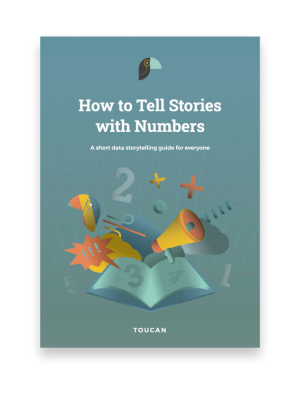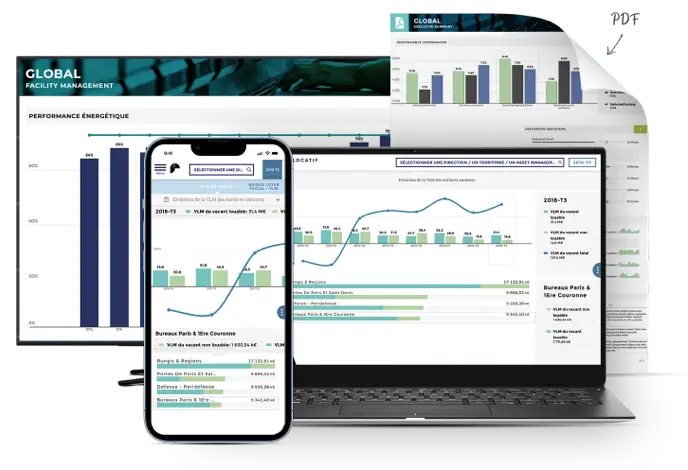Are you finding yourself lost in the labyrinth of data within your business, wondering how to turn that sprawling maze into a clear, navigable map? You're not alone. In the world of data warehousing and business intelligence, knowing the terrain is everything.
The difference between facts and dimensions is the cornerstone of understanding how to convert raw data into insights that can skyrocket your business's efficiency and growth. As the lifeblood of any data warehouse, these elements are the very puzzle pieces that, when correctly assembled, create a complete picture of your business landscape.
Are you ready to transform the way you view your company's data? Strap in, because we're about to take off into the world of facts, measures, and metrics.
Facts and Dimensions in the Data Warehouse
Facts are the core data elements that record the measurable, quantitative events of a business. Think of them as the verbs in the story of your company's operations. They're:
- The sales figures
- The number of transactions
- The hours logged
Essentially, these types of data facts answer the 'how much' and 'how many' questions. These facts are typically numeric and stored in fact tables, which are the centerpiece of a data warehouse's architecture.
In your day-to-day operations, every time you make a sale, a customer returns a product, or you generate a new lead, a new fact is created. These facts are the raw material from which we extract meaningful insights about business performance.
While facts are the quantitative backbone, dimensions provide the qualitative context that frames those numbers. They are the who, where, when, and how that describe the facts.
Now let's look at data warehouse dimension vs fact.
Dimensions are the adjectives and adverbs that enrich a story, offering a narrative to the stark figures. They are stored in dimension tables and include data such as:
- Customer names
- Product types
- Geographical locations
- Time periods
For instance, knowing that 10,000 units were sold is useful, but understanding who bought them, where they were sold, when the sales happened, and how the products reached the customers transforms that raw data into actionable information.
The distinction between dimensions and facts is crucial because it dictates how data is organized, stored, and retrieved in a data warehouse. It directly impacts how quickly and effectively you can access the insights you need.
Dimensions: The Context Providers
Dimensions are essentially the descriptive attributes associated with fact data that enable analysts to answer the who, what, where, when, why, and how of any business operation. They are the metadata that brings color to the black-and-white figures of the facts.
In a data warehouse, dimensions give you the means to slice and dice the facts, to pivot and view your data from different perspectives, and to drill down into the specifics from the general overview.
Let's take a look at the different types of dimensions.
Hierarchical Dimensions: Unpacking the Layers
Hierarchical dimensions navigate through different elevations of your data landscape. Starting from the overarching view, such as annual sales, you can zoom in to quarterly insights, then to monthly details, and all the way down to the daily specifics. It's akin to using a data elevator, allowing you to visit the floor of granularity that suits your current analytical needs.
With hierarchical dimensions, you can identify a standout year and then drill down to uncover that a particular quarter or month drove those exceptional results. It's your investigative tool, guiding you from broad observations to the pinpointed drivers of success.
Categorical Dimensions: Sorting the Data Closet
Categorical dimensions organize your data into well-defined bins, making sense of the chaos. Like categorizing your music playlist by genre, mood, or artist, these dimensions sort data into understandable segments for easy comparison and analysis.
When dissecting your marketing strategy, categorical dimensions segment your efforts by channels, be it:
- Social media
- Product reviews
This clarity lets you see which channels are performing and which ones aren't, providing solid ground for strategic decisions on where to invest your marketing dollars.
Geographical Dimensions: The "Where" in Your Data
Geographical dimensions bring the dimension of "where" into your data narrative, offering a spatial perspective on your operations. It's like having a GPS for your data, showing you not just the destination but also the journey and patterns of your business activities across different locations.
For a company with branches in multiple cities, geographical dimensions can reveal which locations are soaring and which ones might need a bit more attention. It's invaluable for optimizing everything from store performance to delivery routes, ensuring you're not just aware of the "what" but also the "where" of your business dynamics.
Facts: The Building Blocks of Data Warehousing
In the architecture of a data warehouse facts and dimensions, facts are the data points that get tracked, analyzed, and reported. They are the objective, quantifiable metrics that businesses measure to evaluate their performance.
Transactional facts are the bread and butter of fact types, recording the details of each transaction that takes place. For instance, every sale in a retail store is logged as a transactional fact, capturing data like sale amount, time, and item count.
Cumulative facts aggregate data over time, providing insights into trends and patterns. They're useful for understanding growth, like total sales revenue over a quarter or year.
Snapshot facts provide a "snapshot" of data at a particular point in time, useful for capturing states, such as inventory levels at the end of a month or the number of subscribers at a specific date.
Each type of fact plays a pivotal role in painting a comprehensive picture of business operations.
Measures: Quantifying the Qualitative
Measures take the raw, often overwhelming pile of facts and transform them into clear, digestible insights. If facts are the individual notes played by an orchestra, measures are the symphony that emerges.
They're all about calculation and aggregation, turning "how many" and "how much" into "here's what it means."
For example, each sale is a fact. But when you start asking, "What's our best-selling product?" or "How much does each customer spend on average?", you're stepping into the realm of measures. These are the answers you get after mixing, stirring, and baking your facts.
Facts and measures in a data warehouse are better together. Facts are the raw events, like each:
- Individual sale
- Customer call
- Website visit
Measures are what you get when you squish these facts together to find out the bigger picture, like:
- Total sales
- Average call duration
- Daily website traffic
Measures give your facts a voice, letting them tell you the story of your business in numbers you can understand and act on. Without measures, you're just collecting data; with them, you're unlocking the treasure of insights that data contains.
Dimensions vs Measures: The Dynamic Duo
Dimensions and measures are the bread and butter of data analysis, each playing a crucial role on their own. But when they come together, they're like a perfectly choreographed dance, offering a 360-degree view of your data.
This partnership enables you to leap from seeing mere numbers to uncovering actionable insights that can:
- Inform strategy
- Drive innovation
- Propel your business forward
For instance, dimensions can tell you that your most loyal customer base is in the city of Metropolis in June. Measures take this further by revealing that sales in Metropolis in June skyrocketed, making it your best month. Alone, each provides a piece of the puzzle; together, they give you the full picture.
The Distinctions Unveiled: Facts, Measures, and Metrics
Metrics are often conflated with measures, but there's a subtle and significant difference. Metrics are a subset of measures that are specifically used to assess performance against a goal or standard.
They are the key performance indicators (KPIs) of the business world, contextualized measures that provide insight into the health, efficiency, and success of various business operations. Metrics answer "how well" by evaluating measures against objectives, like:
- Conversion rate
- Customer satisfaction score
- Return on investment (ROI)
Metrics are not dimensions; rather, they use dimensions for context. For instance, a metric like "customer satisfaction score" might be analyzed across different "time" dimensions (monthly, quarterly) or "location" dimensions (by store, region) to provide deeper insights.
All metrics can be considered measures, but not all measures are metrics. Metrics are the measures that matter most, the ones you track regularly to gauge performance and make strategic decisions.
Finally, metrics are a step removed from facts. They are the end product of processing and analyzing facts, through measures, to extract actionable insights aligned with business goals.
Navigating the Narrative: Facts and Dimensions Unveiled
In the quest for data-driven success, understanding the interplay between facts and dimensions is pivotal.
As we've explored the nuances of facts vs dimensions and delved into the architecture of the data warehouse, the distinction becomes clear. Each plays a critical role in the storytelling of data.
Looking to turn your data into compelling stories that drive engagement and growth? Toucan's analytics platform is your ally. Our no-code, cloud-based solution offers unparalleled customization and a user-friendly experience across any device, ensuring your data's story reaches its full potential.
Discover how Toucan can transform your data storytelling.





